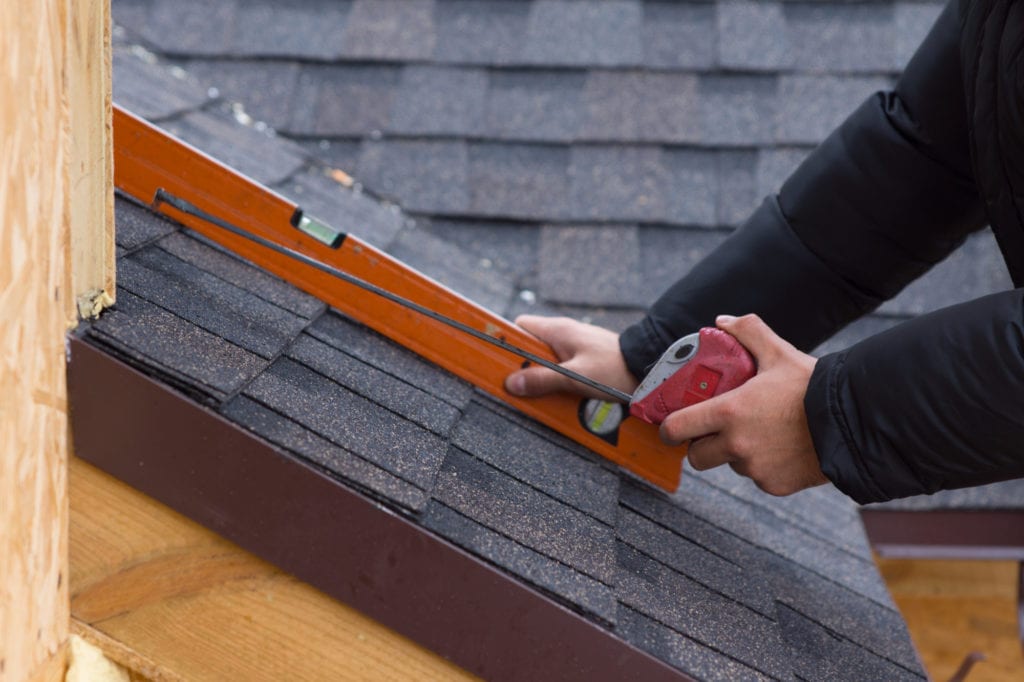The Ultimate Roof Inspection Checklist for Homeowners
Home » The Ultimate Roof Inspection Checklist for Homeowners

Many homeowners have the impression that their roofs are in good condition just because the shingles look to be intact. And everything looks OK from the ground below. Not necessarily so!
A lot can be going on with the surface of your roof that you can’t see. A number of issues could be affecting the roof parts beneath the surface and on the sides and joint areas.
That’s why you need a pro with a roof inspection checklist first and foremost. Our residential roof inspection checklist will ensure that we don’t miss anything that might need repair or replacement.
A Comprehensive Roof Inspection Checklist
Roofs have few enough major components that getting a broad view is relatively easy. However, a professional roofer’s residential roof inspection can uncover various, often severe, yet hidden problems. Let’s find out more.
1. We Consider the Roof Type
There are a plethora of roofing types available today. However, because roofs comprise a range of different materials, each has its specific maintenance recommendations and precautions.
So we make sure we have the most up-to-date information on your specific roof type before the inspection.
2. We Prep the Roof for Inspection
A clean roof makes for a much more effective inspection than one that’s dirty or wet. That’s why we clear away any debris, such as loose branches or fallen leaves, and remove any moss or lichens that might be growing.
We also check for ponding water, which is just what it sounds like: standing water that has formed small ponds on a roof. Ponding can cause severe roof damage if not removed quickly.
3. We Inspect the Flashing
When inspecting your roof, we always check for cracks or tears in the flashing. Flashing is a thin layer of waterproof material to prevent water incursion and the damage it can cause.
Aluminum, galvanized steel, and PVC are common types of flashing material used today. Flashing is usually installed over roof seams that face uphill. Doing this lets rain or melting snow and ice flow over the seam rather than entering it.
Flashing has several uses, though it is commonly seen in valleys or on chimneys. It’s also at the base of any vents, such as the one for the home’s plumbing. These are also called “rubber boots.”
4. We Check the Roof’s Entire Surface—Top to Bottom
No good roof inspector would miss a home’s best defense from the elements: the outer roof covering, whether asphalt shingles, metal, clay tile, cedar shakes, or other material.
Any cracked, torn, or otherwise worn or damaged shingles or other roofing surface materials should be repaired or replaced. Shingles that are buckling, curling, or blistering are also a sign of wear and tear.
We also look for any protruding nail heads or loose nails. Nails should be flush with the shingle. We also look for any asphalt shingle granules in your gutters. This is another sign of shingle wear.
Ridge vents are also part of a shingled roof. You can spot them easily because they look like an elevated layer of shingles. In fact, they are covering attic or roof vents. Hence there is a small gap.
5. You Can Help Us by Checking the Attic or Highest Ceiling
Cracking, wet spots, and other damage on inside ceilings are signs of a leaking roof. The unseen layers beneath the surface material are especially prone to hidden roof damage that can gradually eat away at your home.
If you see ceiling damage, tell us so that we know to check each roof layer extra carefully for leakage.
6. We Check the Decking and Underlayment
A roof’s deck or decking is the hard wood that rests directly on the beams and supports other roofing layers. Underlayment is a layer of fiberglass paper or felt covering the decking. Often, there is a moisture-resistant membrane between the two layers.
7. We Examine the Gutter Condition
Your gutters and the parts that surround them are also areas of concern for roofers and homeowners. There’s nothing like stray water to cause problems. When gutters clog, back up, overflow, or leak, your home will see some damage.
The fascia boards and soffits that surround and support your gutters also need regular inspection. Their material (e.g., wood, metal, synthetic) is subject to corrosion or degradation, especially when exposed to errant water.
The exterior soffit is located beneath the rafter tails, while the fascia is an exposed horizontal band that runs along the end of the rafters.
8. And We Never Forget the Downspouts
Downspouts are part of your gutter system. They ensure that the water gutters collect finds its way to the ground and away from the house.
Still, it’s harder to see any debris collected in the downspouts. Thus, it’s that much more important to keep your gutters clean so that the water flow doesn’t push debris into them.
Downspouts also can corrode, crack, and develop gaps at the seams. So be sure to have some roofing cement with you when inspecting them, so you can make small repairs if needed.
How Often Should You Schedule a Roof Inspection?
As long as you’re living in a house, you should schedule a professional roof inspection with us annually. You never know what kinds of weather damage—or just plain wear and tear—can damage your roof in a year’s time.
Another time for a roof inspection is after a major storm, especially one with hail, ice, or heavy wind gusts. And if you’re planning to sell your house, be sure to hire roofers like us who use roof assessment checklists.
We can help you head off any surprises from the buyers’ home inspector.
Why the Pros Use Roof Inspection Checklists
You should work with roofers who use roof inspection checklists on hand when inspecting your roof. We share the checklist with you after the inspection since it’s a good reminder of what we observed.
If pros are doing the inspection, the list will remind you what to ask about or call to their attention. We like working with conscientious homeowners who keep an eye on their roofs year-round.
We’re a roof repair service in Missouri, Illinois, and Florida. If you need roof repairs or replacement and live in one of our service areas in these states, please reach out to us today—before your roof’s condition worsens.




